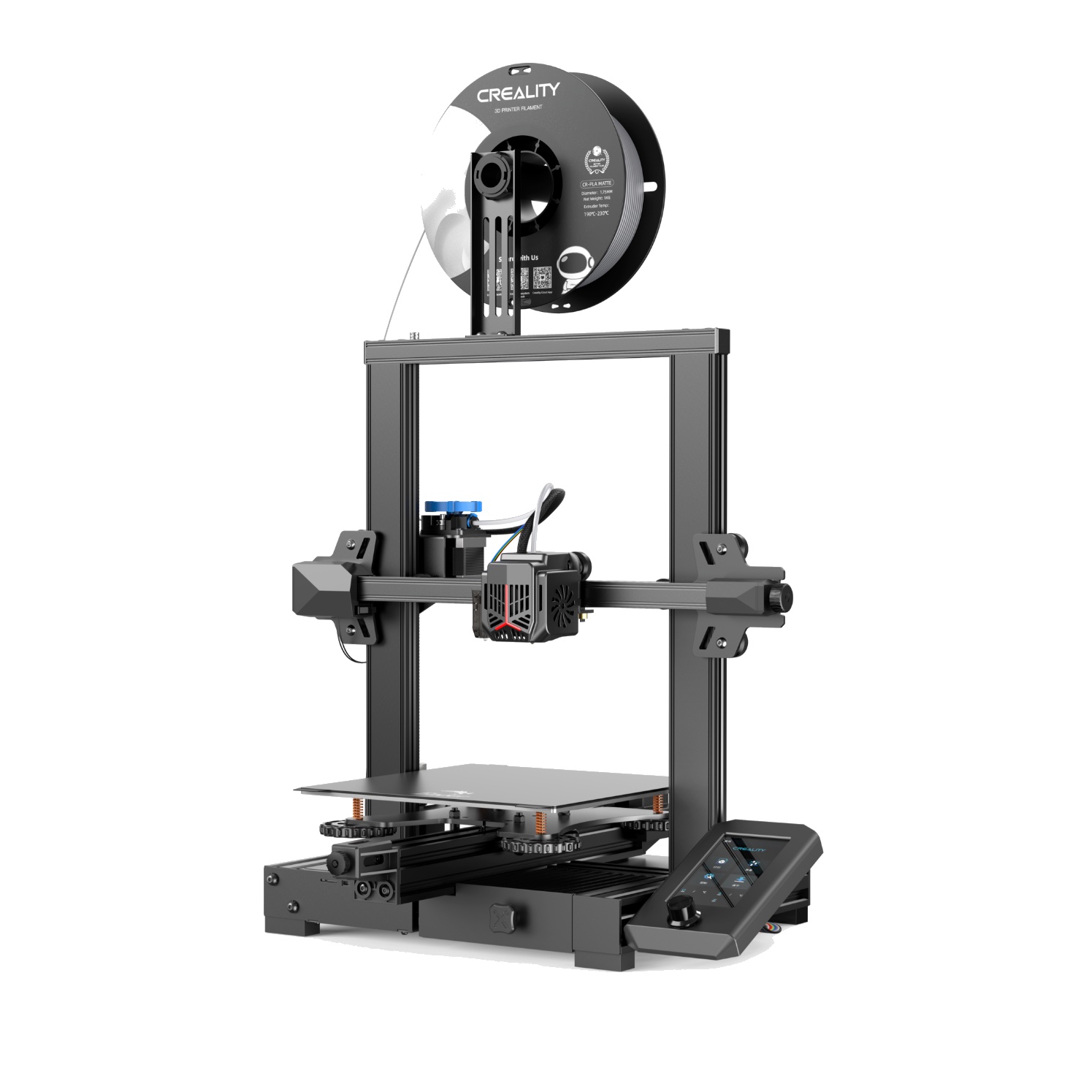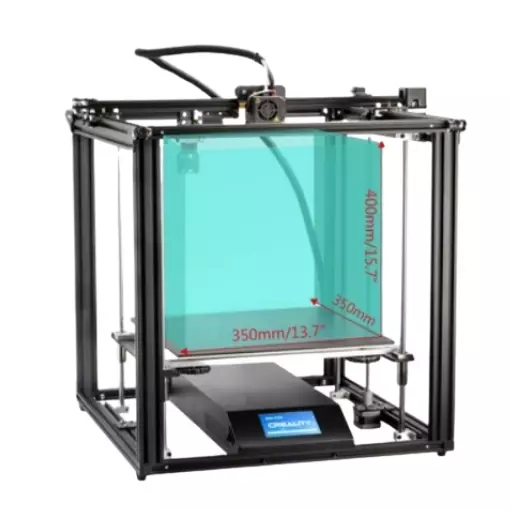Compare Ender 3 V2 Neo vs Ender 5 Plus
Comparison between the best 3D printers
Choose the best 3D printer at the best price. The cheapest 3D printers are here.
Buy a 3D printer here with 3D Fila.
 |
 |
|
| Model | Ender 3 V2 Neo[BUY Ender 3 V2 Neo] |
Ender 5 Plus[BUY Ender 5 Plus] |
| Printing Material | Filament | Filament |
| Buy Filament for Creality 3D Ender 3 V2 Neo | Buy Filament forCreality 3D Ender 5 Plus | |
| Estimated price | $310,00 | $599,00 |
| Manufacturer | Creality 3D | Creality 3D |
| Release Year | 2022 | 2019 |
| Print Volume [mm] | 220x220x250 | 350x350x400 |
| Printer Size [mm] | 438x424x472 | 632x619x666 |
| Weight [kg] | 9,8 | 18,2 |
| Power Loss Recovery | YES | YES |
| Enclosed printer | NO | NO |
| Bed Leveling | Automatic | Automatic |
| Filament End Sensor | YES | YES |
| Bed type | Heated | Heated |
| Power supply system | Bowden | Bowden |
| Standard nozzle | 0,4 | 0,4 |
| Maximum Nozzle Temperature [°C] | 260 | 260 |
| Maximum Bed Temperature [°C] | 100 | 100 |
| Maximum printing speed [mm/s] | 80 | 180 |
| Filament holder | YES | YES |
| Camera for supervision | NO | NO |
| Recommended filaments | PLA, PETG | PLA, TPU, ABS, PETG |
| Recommended slicers | Cura, Simplify, Slic3r, IdeaMaker | Cura, Simplify, Slic3r |
| Maximum Resolution [mm] | 0,1 | 0,1 |
| Processor | 4.2.2 mainboard | 32 bits |
| Display | Display touchscreen 4,3'' | Touchscreen TFT 4,3'' |
| Power Supply | 24V / 504W | |
| Connectivity | SD / USB | SD / USB |
| Operating systems | Windows, Mac, Linux | Windows, Mac, Linux |
| Date of registration in the system | 2022-12-09 | 2021-04-14 |
| Release date | 2022 | 2019 |
| Extra features | The Ender 3 V2 Neo printer stands out for its automatic bed leveling with the CR Touch system, ensuring high-quality initial layers. It features an all-metal Bowden extruder for increased durability and improved filament handling. Its flexible, PC-coated magnetic build plate makes it easy to remove prints and is durable and easy to clean. It also includes a new user interface with model preview and an updated gantry design. The Ender 3 V2 Neo maintains the same build volume and temperatures as the previous version, supporting popular filaments such as PLA and ABS. It features a quiet 32-bit mainboard and additional features such as a filament sensor, print recovery, simple 3-step assembly, an integrated toolbox, and belt tensioners. | The Ender 5 Plus offers a large print volume (350x350x400 mm) and fast assembly. It includes a BLTouch sensor, but with range limitations. It stands out for its dimensional accuracy, although it requires adjustments to the slicer settings. Despite the noise, its integrated design saves space, and includes features such as a filament sensor and power resumption. Ideal for large projects, it requires refinement in the settings for high-quality prints. |
| Support for multiple colors and materials (AMS and CFS) | NO | NO |
Notes * |
||
| Cost-benefit | 6 / 10 | 6 / 10 |
| Hardware | 2.4 / 10 | 2 / 10 |
| Tela | . | . |
| Print volume | 3 / 10 | 4 / 10 |
| Performance | 0 / 10 | 1 / 10 |
| [BUY Ender 3 V2 Neo] | [BUY Ender 5 Plus] |
Conclusion |
| In conclusion, the comparison between the Ender 3 V2 Neo and the Ender 5 Plus highlights several key differences that cater to varying user needs and budgets. The Ender 3 V2 Neo stands out for its affordability, compact size, and efficient automation features such as automatic bed leveling and quick assembly, making it an excellent choice for beginners and hobbyists looking to produce high-quality prints without the need for extensive setup. It is suitable for common materials like PLA and PETG, offering a well-rounded performance for its price point. On the other hand, the Ender 5 Plus, while significantly more expensive, provides a larger print volume and faster maximum printing speed, which is advantageous for larger projects. However, it requires more fine-tuning in slicer settings for optimal print quality and may be less user-friendly for novices despite its integrated design. Its support for a wider range of materials (such as TPU and ABS) makes it a versatile option for experienced users who take on more complex printing tasks. Ultimately, the choice between the two depends on the user's specific requirements—if budget and ease of use are priorities, the Ender 3 V2 Neo is likely the better choice. Alternatively, for those seeking more substantial print capacity and speed to handle larger or more intricate projects, the Ender 5 Plus may justify its higher cost. |

